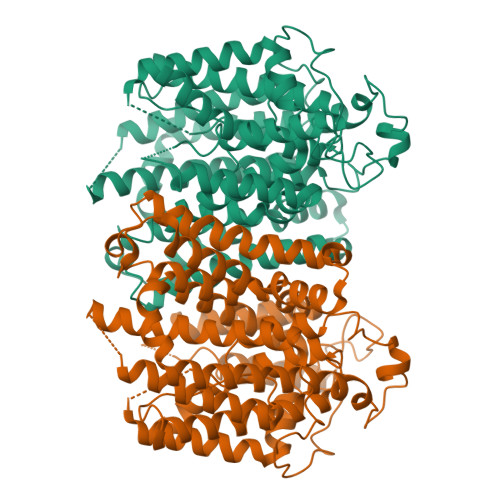Dimeric transport mechanism of human vitamin C transporter SVCT1.
Kobayashi, T.A., Shimada, H., Sano, F.K., Itoh, Y., Enoki, S., Okada, Y., Kusakizako, T., Nureki, O.(2024) Nat Commun 15: 5569-5569
- PubMed: 38956111
- DOI: https://doi.org/10.1038/s41467-024-49899-2
- Primary Citation of Related Structures:
8JEW, 8JEZ, 8JF0, 8JF1 - PubMed Abstract:
Vitamin C plays important roles as a cofactor in many enzymatic reactions and as an antioxidant against oxidative stress. As some mammals including humans cannot synthesize vitamin C de novo from glucose, its uptake from dietary sources is essential, and is mediated by the sodium-dependent vitamin C transporter 1 (SVCT1). Despite its physiological significance in maintaining vitamin C homeostasis, the structural basis of the substrate transport mechanism remained unclear. Here, we report the cryo-EM structures of human SVCT1 in different states at 2.5-3.5 Å resolutions. The binding manner of vitamin C together with two sodium ions reveals the counter ion-dependent substrate recognition mechanism. Furthermore, comparisons of the inward-open and occluded structures support a transport mechanism combining elevator and distinct rotational motions. Our results demonstrate the molecular mechanism of vitamin C transport with its underlying conformational cycle, potentially leading to future industrial and medical applications.
Organizational Affiliation:
Department of Biological Sciences, Graduate School of Science, The University of Tokyo, Tokyo, Japan.
















